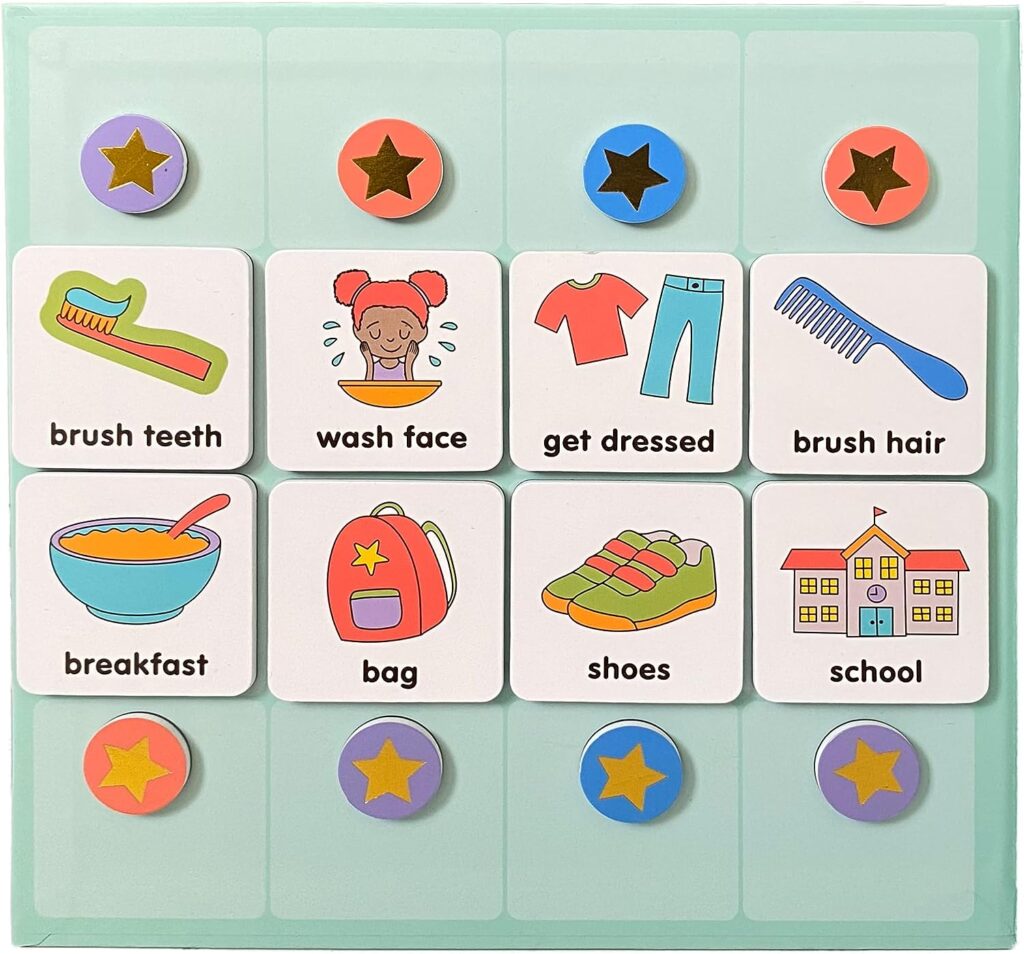Getting a toddler to sleep alone can be a challenging phase for many parents. This struggle often stems from a child’s developmental milestones and psychological needs. Toddlers, as they grow, start to understand separation, which can make the prospect of sleeping alone daunting and uncomfortable for them.
Psychological Aspects of Sleep Anxiety in Toddlers
At this age, children begin to develop a vivid imagination, which can sometimes lead to fears or anxieties about being alone at night. Understanding these psychological aspects is crucial for parents. It helps in approaching the situation with empathy and patience.

Getting Enough sleep for toddlers
Getting enough sleep is vital for everyone in the family, not just the toddler. Lack of sleep can lead to challenging toddler behaviors, like frequent tantrums and a generally grumpy attitude. It’s important to start early with setting up healthy sleep habits.
Sometimes, without realizing it, parents might encourage habits that later become obstacles to good sleep. Changing these habits can be tough, but it’s definitely doable and worth the effort. Establishing clear sleep routines early on helps in avoiding these issues, making life easier for both the child and the parents.
The Impact of Routine on Toddler Sleep
One of the key factors in easing this transition is the establishment of a consistent bedtime routine. Research has shown that routines significantly signal to a child that it’s time to wind down and prepare for sleep. This routine can include a variety of calming activities, such as reading a story, taking a warm bath, or listening to gentle music.
Consistency in these routines provides comfort to the child and helps set clear expectations around bedtime.
Toddler Sleep Associations
Sleep associations in toddlers are cues or activities that they associate with falling asleep. These can be objects like pacifiers, blankets, or stuffed animals, or actions such as nursing, rocking, or sleeping beside a parent. These associations start forming early in life and play a significant role in how a toddler goes to sleep.
Healthy sleep associations are part of a beneficial bedtime routine, preparing the child’s mind and body for sleep. These might include a warm bath, brushing teeth, reading a story, dimming lights, or singing.
However, some associations can be problematic. For instance, relying on a bottle of milk for sleep might lead to dental issues or unnecessary calorie intake. Similarly, sleeping in the child’s room may disrupt the parent’s sleep quality. Parents need to evaluate whether a sleep association is hurting their child’s or their own sleep.
Identifying Sleep Associations
- Observe Bedtime Behavior: Look for patterns in your child’s behavior at bedtime. If your child needs certain conditions like being rocked, fed, or having a parent present to fall asleep, these are sleep associations.
- Note Night Wakings: If your child wakes up multiple times at night and requires the same conditions to go back to sleep, this indicates a sleep association.
- Assess Dependency: Determine if the association is something the child can do themselves (positive) or something they rely on you for (negative).
Reducing Negative Sleep Associations
- Retrain with New Associations: Gradually replace the negative associations with more sustainable ones. For toddlers, this might involve being in the room but reducing the level of interaction gradually.
- Establish Bedtime Routines: Create a consistent bedtime routine that cues your child that it’s time for sleep. This routine should be calming and something the child can look forward to.
- Create a Sleep-Conducive Environment: Ensure the child’s sleeping environment is ideal for sleep – quiet, dark, and comfortable.
- Practice Self-Soothing: Encourage techniques that help the child soothe themselves to sleep, like cuddling a favorite toy.
- Consistent Approach: Whatever method you choose to wean off the negative association, consistency is key. Mixed signals can confuse the child and make the process harder.
- Gradual Withdrawal: Slowly reduce your presence or the specific action that your child associates with sleep. For example, if you usually rock them to sleep, start by reducing the time spent rocking.
Practical Solutions To Get Toddlers to Sleep in Their Own Bed
First, Shift them from Crib To Floor Mattress
Transitioning a toddler from a crib in the parents’ room to a floor mattress in their own room can be a beneficial step. Floor mattresses or beds have several advantages for toddlers.
They eliminate the worry of the child climbing and falling out of a high bed, promote independence as the child can get in and out on their own, and reduce feelings of confinement, potentially leading to less crankiness.
Additionally, they make it easier for parents to join the child if they wake up at night and leave without disruption.
Buy a Good Quality Mattress
When parents transition their child from a crib, many opt for a fancy toddler bed. However, a more important investment might be in the mattress itself.
It’s crucial to be aware that many traditional mattresses contain potentially harmful chemicals like PVCs, flame retardants, and polyurethane foam, which could have long-term health implications for children.
Opting for an organic mattress can be a safer choice. For example, Naturepedic’s Organic 2 in 1 Kids Mattress is well-regarded among parents for being breathable, organic, and waterproof – qualities that are especially beneficial during potty training.
Such products underscore the importance of choosing non-toxic sleep solutions for children’s safety and health.
Communicate with them effectively
Effective communication is key when dealing with a toddler’s bedtime. If they feel insecure or cry when you leave, it’s important to reassure them calmly that you’re nearby, but they need to stay in bed. If they get out of bed, gently but firmly put them back without engaging in discussions or making it a big deal.
Maintain a calm and reassuring tone of voice, and avoid showing tension in your face or body language. Your toddler will likely test these boundaries, so consistency is crucial.
Keep returning them to bed, as needed, to reinforce that it’s time to sleep. This approach demonstrates that you’re serious about bedtime while providing them with the security they need.
Be calm but be persistent
If your toddler tries to follow you out of the room at bedtime, a good approach is to stay in the room, sitting on the floor or in a chair near the bed. This provides physical reassurance of your presence. Gently but firmly ensure they stay in bed, communicating this expectation clearly and just once.
It’s important to minimize talking and interaction, and not to fall asleep in their room. Consistency is key, and while the first week might be challenging, with persistence, it usually takes just a few weeks for new sleep habits to be established.
Establishing a Comforting Bedtime Routine
Creating a comforting and consistent bedtime routine is paramount in teaching toddlers to sleep alone. This routine should include calming activities like reading a book or listening to soft music, which help signal to the child that it’s time to wind down.
To create a calming atmosphere in your toddler’s room for bedtime, consider the following elements:
- Tidy Up Toys: Encourage your toddler to put away toys before bed, reducing clutter and creating a more peaceful space.
- Dim Night Light: Use a soft, dim night light to provide a gentle and soothing environment.
- Humidifier: A humidifier can keep the air moist, helping to clear nasal passages for better sleep.
- Blackout Curtains or Blinds: These curtains are particularly useful in summer to mimic nighttime and signal to the brain that it’s time to sleep.
- Bedtime Routine Charts: Implementing a visual chart can help establish and maintain a consistent bedtime routine.

For more detailed information on these products and their effectiveness, you can explore further in the post 8 Best Baby Sleep Tips And Tricks That Really Work For New Moms.
Avoid stimulating activities like screen time before bed, as these can hinder the child’s ability to fall asleep. Consistency in this routine is key, as it helps the toddler understand what to expect each night.
Creating a Soothing Sleep Environment
The sleep environment plays a crucial role in how well a toddler sleeps. Ensure the room is comfortable, quiet, and dark. Some parents find that nightlights or soothing sound machines can help make the child feel more secure. It’s also important to make sure the bed and pillows are comfortable, as physical comfort is a big part of helping the child feel relaxed in their own space.
Expert Tips for Easing the Transition
Incorporating expert advice can significantly aid in this transition. The Cleveland Clinic offers valuable tips on this topic, such as using a ‘sleep fairy’ or a sticker chart as positive reinforcement methods. These techniques can motivate the child to stay in bed and fall asleep on their own.
Positive Reinforcement Techniques
Positive reinforcement can be a powerful tool. This could involve rewarding the child for staying in bed all night or for trying their best even if they don’t succeed initially.
The rewards don’t have to be big; sometimes, the acknowledgment of their effort is reward enough.
Additional Resources and Advice
Leveraging Professional Health Advice
Turning to professional health organizations for guidance can be invaluable. The NHS and Mayo Clinic, renowned for their expertise in child health, offer comprehensive advice on managing young children’s sleep issues.
Their insights on the psychological and developmental aspects of toddler sleep can provide a deeper understanding of what your child is experiencing. For detailed health guidelines, consider exploring NHS’s advice on children’s sleep and Mayo Clinic’s strategies for bedtime problems.
Addressing Common Parental Concerns
Parents often have numerous questions and concerns when it comes to their toddler’s sleep. Here below I have added a FAQ section, inspired by real queries from parents, that can address common issues such as dealing with nighttime fears or how to react if the toddler wakes up in the middle of the night.
Maintaining Long-Term Healthy Sleep Habits
Finally, it’s important to emphasize the long-term perspective. Helping a toddler sleep alone is not just about overcoming immediate challenges; it’s about instilling healthy sleep habits that will benefit them for years to come.
Consistency, patience, and understanding are key. Remember, each child is unique, and what works for one may not work for another. It’s a journey of trial and error, but with the right approach, it’s a journey that can lead to success.
Conclusion
In helping your child become more independent and learn to sleep on their own, communication and emotional support are key. It’s beneficial to discuss this new journey with them during the day, in a way they understand.
Giving your child plenty of affection and reassurance throughout the day reinforces a sense of security. Praising their efforts and progress in sleeping independently is crucial. Acknowledging and celebrating every small step they take towards this goal can boost their confidence and sense of accomplishment.
Listen attentively when they express pride in their achievements, and validate their feelings. Often, toddlers might surprise themselves with what they can accomplish, especially when they initially thought it was too challenging.
This approach not only supports their development in sleeping independently but also strengthens your bond with them, making them feel loved and confident in their abilities.
FAQ Section For More Answers
Why does my toddler have trouble sleeping alone?
Answer: Toddlers often struggle with sleeping alone due to developmental changes, separation anxiety, and a growing imagination that can lead to fears or anxieties at night.
How can I create a bedtime routine that works?
Answer: Establish a consistent routine involving calming activities like reading, soft music, or a warm bath. Avoid stimulating activities right before bed and try to make bedtime a positive and relaxing experience.
What if my toddler keeps getting out of bed?
Answer: Consistency is key. Gently guide them back to bed each time, reinforcing the idea that nighttime is for sleeping. Avoid turning it into playtime or a time for attention.
Can I use rewards to encourage my toddler to sleep alone?
Answer: Yes, positive reinforcement like sticker charts or small rewards for staying in bed can be effective. Ensure the rewards are consistent with good sleeping behavior.
How can I help my toddler feel safe and secure at night?
Answer: Keep a comforting item in bed, like a favorite stuffed animal. Also, a nightlight or a family picture in their room can provide a sense of security.
What should I do if my toddler is scared of the dark?
Answer: Acknowledge their fear and provide comfort. A nightlight or leaving the door slightly open can help. Gradually encourage them to become more comfortable with the darkness.
How long will it take for my toddler to adjust to sleeping alone?
Answer: This varies with each child. It’s important to be patient and consistent. It might take a few weeks to see a change, but with persistence, most toddlers adapt well.
Related Articles:
How To Calm A Fussy Baby? My 10 Tips!
11 Effective Tips To Reverse Defiance In Kids
Potty Training Tips For First Time Parents: 10 Strategies To Consider
How To Get Picky Toddler Eat Healthy Meals
The 26 Best Books For Preschoolers
How To Make Your Child Listen Without Yelling
8 Best Baby Sleep Tips And Tricks That Really Work For New Moms
Baby Foods To Help With Constipation
How To Start Teaching Kids At Home – 8 Homeschooling Basics
My 10 Tips For Dealing With Terrible Twos
Don’t Forget To Pin It For Later!

My Toddler won’t Sleep Alone: Get Toddlers to Sleep in Their Own Bed
Disclaimer: This content is for informational purposes only and is not intended as a substitute for professional medical advice, diagnosis, or treatment. Always consult your healthcare provider with any questions you may have regarding a medical condition. Our blog posts contain affiliate links. These don’t cost you anything extra, but they allow us to continue running this site and providing free content for our readers. Please read my full disclosure here.
I am the Wife, Mommy, & Blogger behind All Moms Blog learning to run my own home and raise up kids while chasing my dreams. I work to support, inspire, and encourage moms in the journey of motherhood to make their lives easier without losing your sanity.

